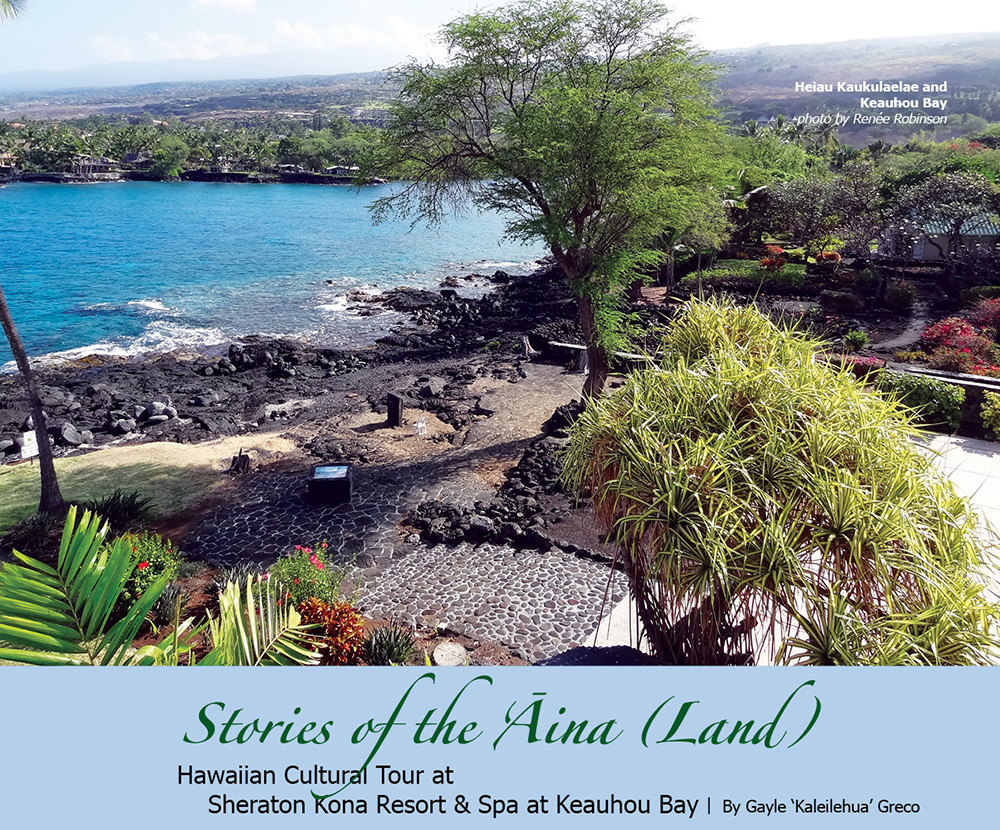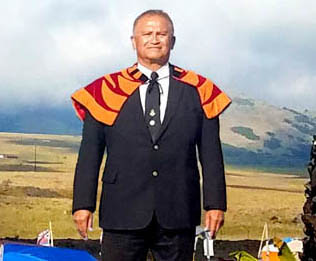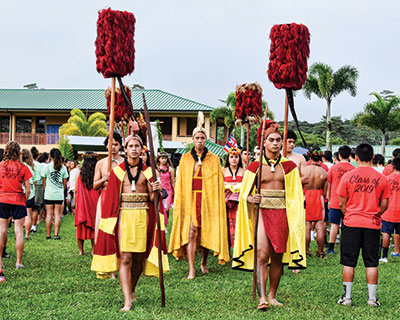
World Wide Voyage–Threads That Tie: The Hōkūle‘a Crew Connecting Hawaiian Culture to the World
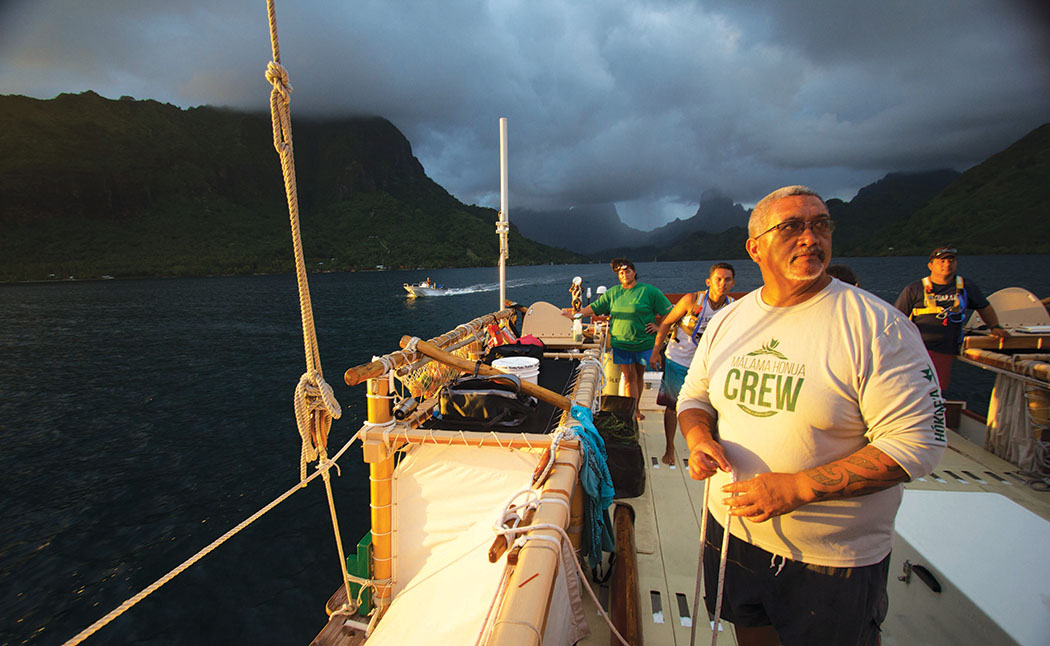
By Le‘a Gleason
Hawai‘i is a place where we navigate community and culture, finding a delicate balance between reverence for the past and enthusiasm for the future.
It’s with this same careful attention to culture that we watch from afar as the Hōkūle‘a and her sister vessel, Hikianalia, sail the world as ambassadors, explorers, and gatherers of cultures and traditions both new and old.

The Hōkūle‘a is a traditional double-hulled sailing vessel with crew members who study nature’s elements for traditional navigation.
There is no glue on the Hōkūle‘a.
All the pieces can come completely apart, and are literally bound together with many yards of cord made by crewmembers in the months of preparation before the voyage.
In that same sense, crewmembers on the vessel must work to create that bond with each other and with the elements to make the voyage a success.
A crew member explained, “Once you wake up the first morning to 360 degrees of ocean, you’re in it.”
By its side, the Hikianalia is an updated vessel, traditional in design, and technologically outfitted with a research lab, satellite-internet connection, and a battery-operated motor charged by solar panels. It’s the scientific hub of the voyage, allowing scientists and crew members to research ocean species, water quality, and allowing the public an unprecedented look into what’s happening on board.
A revolving team of crew members of both vessels will sail the world together as ambassadors of ancient culture, looking for ways to bring more sustainability to the islands through sharing knowledge with other cultures at each place they dock.
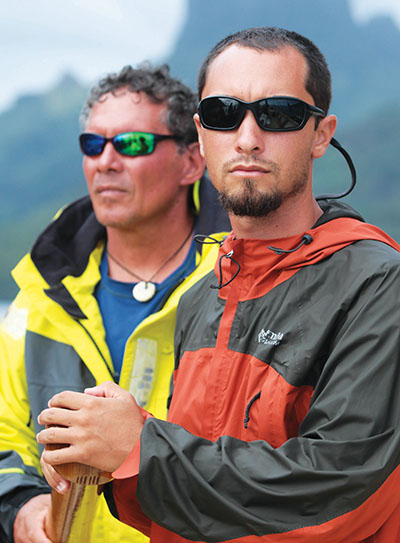
At the printing of this issue of Ke Ola Magazine, the voyage is on its second leg, traveling from Tahiti to Cook Islands, to Samoa.
Navigator Chadd ‘Onohi Paishon told UH Alumni Magazine (UHAM) the story of how he first became involved with the Hōkūle‘a.
It started with a picture.
Chadd met Herb Kawainui Kāne, one of the four Polynesian Voyaging Society (PVS) founders, as a child and was gifted a drawing of the canoe. He says he only ever imagined getting to touch the canoe. He began sailing and taking classes at the Sand Island Education Training Center, so he’d be prepared, just in case. As fate would have it, in 1992 he was chosen for Hōkūle‘a’s voyage to Tahiti.
He told UHAM, “The crew really becomes family. The canoe is our mother; the navigator is our father. Aboard the Hōkūle‘a I really felt I belonged.”
Chadd is one of just five Pwo (master navigators) in Hawai‘i, trained by Micronesian navigator “Papa” Mau Piailug.
“It’s still a learning process. I’m always amazed about how much our ancestors knew. We’re still scratching at the surface at what they understand,” he said in UHAM.
During this voyage, he says he is most looking forward to “making connections and reconnections with people and passing on the knowledge passed on from our teachers and sharing and learning from the world how we are all caring for our honua.”

Keala Kahuanui is the cook and one of two watch captains for the second leg of the voyage. She’s trained, sailed, and taught aboard the Makali‘i, a double-hulled canoe on Hawai‘i Island, since 2000. In 2007, she took her first voyage to Micronesia to gift Papa Mau with a Hawaiian voyaging canoe named Alingano Maisu with Chadd as navigator.
On this leg of the Hōkūle‘a’s journey, Keala is again working with Chadd and says he will “be our father of the wa‘a as our navigator.”
“This leg is about reconnection. I’m excited about returning back to our motherland and seas. I’m looking forward to being out on the ocean and on land, in the elements, with our synchronized crew on our mama Hōkūle‘a,” she says.
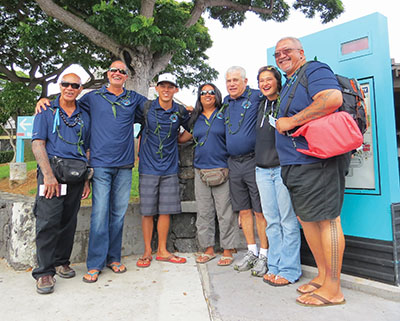
photo courtesy Pua Case
Quartermaster Maulili Dickson is serving many duties as cook, fisherman, and electrician on the voyage. At 67, he’s the oldest of the current crew and was first welcomed to the Hōkūle‘a in the seventies in preparation for the 1978 voyage. He later trained with crew members on E Ala, Hōkūle‘a, Makali‘i, Hawai‘i Loa, and Hikianalia, and was a member of the search team to locate logs for the Hawai‘i Loa before 1991.
Maulili is looking forward to “sailing to all the island communities in the Tahiti, Cook Island, and Samoa groups, and helping the younger crew members.”
Crew member Mike Manu became involved with the Polynesian Voyaging Society (PVS) in 1992 during the “Mauloa project” and was involved in a ceremony for the tree that would become the Mauloa. In 1995, he sailed the Makali‘i’s maiden voyage to Tahiti, and on this leg he is looking forward to reconnecting with the families he met then.
“These connections are a vital part in increasing the longevity of all the lessons Papa Mau has given us and the continuation of the Art of Wayfinding in the Hawaiian and Polynesian Cultures,” he says.
Kalani Keamu is the rescue swimmer for this leg of the voyage and was there 18 years ago when Hōkūle‘a arrived at Makua Bay, Tahiti.
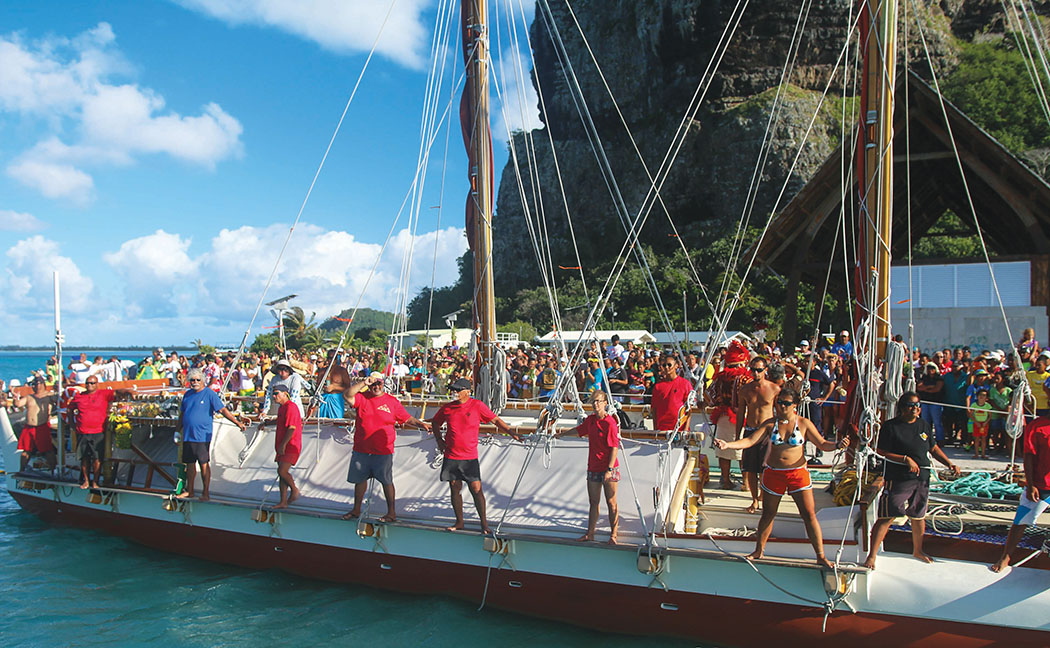
“I was one of the hundreds of Hawaiians in the water at that time, and it was like the King’s arrival on this huge Hawaiian canoe. They dropped the anchor, and I was tasked by one of the uncles on deck to make sure the anchor was set right. Keep in mind I was just a bystander…and Uncle said, ‘Check the anchor, boy.’ I haven’t let go of the rope yet. Still hanging on,” he says.
Kalani has worked with the community to make blankets as gifts for the people they will visit.
“We’ve made over a hundred keiki blankets with our peace flag activities here in Hilo. Lots of kūpuna and community people helped me…I need to do this for the people from my community,” he says.
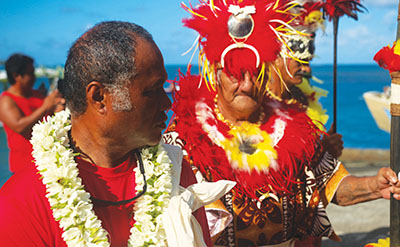
Julaine Keamo is the educational specialist on board and is blogging and connecting online with local schools, as well as carrying out science experiments. She’s an educator at Ke Kula ‘o Nāwahīokalani‘ōpu‘u and became involved with PVS through the ocean program at her school. There she had the opportunity to sail interisland on the Hōkūalaka‘i.
“There are so many things I’m looking forward to,” she says, “[Among them] is making a difference in the way the children of Hawai‘i perceive themselves.”
“I am most looking forward to gaining new knowledge and perspective throughout this voyage and imparting this new knowledge with the schoolchildren throughout Hawai‘i. There is nothing more special than to share this experience with others,” she says.
And thanks to technology, islanders will be able to share that experience, so that the bond of those threads that tie the Hōkūle‘a together as it sails the world can be felt all the way across the world, on a tiny island in the middle of the Pacific called Hawai‘i. ❖

Editor’s note: Our goal is to have a WWV update in every issue of Ke Ola Magazine during the voyage. If you have a WWV story you’d like us to consider, please contact us: HIeditor@KeOlaMagazine.com.
Contact writer Le‘a Gleason: lgfreelancehawaii@gmail.com
